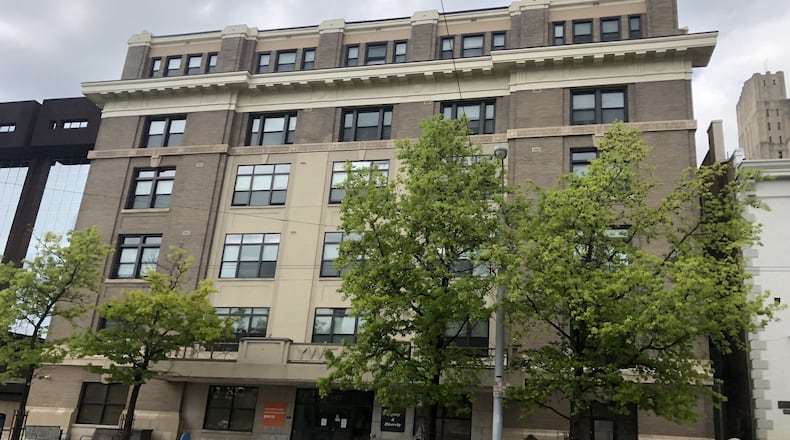Ohio’s shelter-in-place order was meant to isolate people from COVID-19, but it also means domestic violence victims are isolated with their abusers and they may fear that seeking help will put them at greater danger, said Courtney Griffith, director of rural strategy with the YWCA Dayton.
“I do not think that domestic violence has decreased,” Griffith said. “I think the stay-at-home order makes it harder for people to reach out for help when their abuser is with them at all times.”
Coronavirus: Complete Coverage by the Dayton Daily News
Many experts predicted the coronavirus pandemic would lead to a domestic violence epidemic since partners are stuck at home during a stressful lockdown, increasing opportunities for conflict.
Across the nation, some cities and jurisdictions have seen a recent increase in domestic violence reports and calls to domestic violence hot lines. In some places, victims reported more severe attacks and injuries.
But the Dayton Police Department received 126 reports of simple assault related to domestic violence in April, which was down nearly 25% from April 2019, according to department data. Police received 142 reports in March, which was an 11% decrease from last year.
Recent victims include a 34-year-old woman who allegedly was attacked last month at a home in Northwest Dayton.
The woman said an argument over money escalated with her child’s father, who threw her to the ground and punched her unconscious.
The woman, who had a large cut to the side of her mouth, said her attacker also threw a brick at her car window. She said they dated for three years but broke up about a month ago.
What’s going on
It’s not clear what explains the reduction in complaints, but it’s possible there’s been an actual decrease in violence and it’s also possible fewer incidents are being reported, said Dayton Police Chief Richard Biehl.
MORE: Dayton to permanently close 2 golf centers
Some victims may have so many life demands right now that reporting abuse may not be a top priority for them, he said. Nationally, about 55% of domestic violence is reported to police, according to Biehl and the Bureau of Justice Statistics.
Biehl warned that the lockdown restricting residents’ social interactions and movements has only gone on for about seven weeks, which is a short period of time to try to evaluate the impact on people’s behaviors.
However, he said domestic violence spiked in other communities following large-scale natural disasters.
Communities impacted by hurricanes Katrina and Rita saw large increases in abuse, and so did other places hit by earthquakes and other devastating weather events and catastrophes. Biehl said this isn't exactly the same kind of crisis, but there are some similarities.
The YWCA had a slight increase in calls to its 24/7 crisis hotline in March, but in April, the call volume fell by nearly 30%, said Michelle Sayer, clinical director of the YWCA Dayton.
Though calls declined, she said nearly five times as many callers last month reported an immediate safety concern that threatened their lives.
Domestic violence can end in gun violence and death.
On Saturday, 32-year-old Dayton resident Krysten Connally died after being shot multiple times on 3200 block of Hillpoint Lane.
Dayton police, who arrested 33-year-old Gregory Eugene Blanton, say the shooting was likely related to domestic violence.
MORE: E-bikes are coming soon to Dayton. Here’s when they hit the streets.
Isolation is very dangerous for survivors, and reduced contact with family, friends and co-workers during this public health emergency means fewer chances that others will notice signs of abuse, Sayer said.
Most battered women first share details of abuse with family, friends, neighbors, co-workers, their pastors or other figures in their lives, said Nancy Grigsby, legal assistance program director with the Ohio Domestic Violence Network.
But those connections have been disrupted by this crisis, and many of the normal, unofficial channels of reporting abuse are gone, she said.
About one-quarter of domestic violence incidents reported to police come from individuals who are not the victim, according to the Bureau of Justice Statistics.
Domestic violence complaints to police agencies and hot lines are up in some places and down in others, which is somewhat puzzling and hard to explain, said Grigsby, who lives in Yellow Springs.
But she said domestic violence likely is happening more frequently overall and right now there are fewer resources available to help victims exit abusive and dangerous situations.
Some survivors have indicated they are afraid to enter shelters because they are worried about infection risks to themselves and their offspring, Grigsby said, and it’s also possible that some survivors mistakenly believe that courts are closed completely and criminal prosecution and protection orders aren’t an option right now.
Abusers use violence as means of control, and their sense of power and control can become threatened during financially stressful and uncertain times, Grigsby said.
Some research suggests that economic hardship, uncertainty and unemployment during recessions increases the likelihood for intimate partner violence and controlling behaviors among men.
The economy has tanked in the last two months, with more than 1.1 million Ohioans losing their jobs and applying for unemployment.
Victims often do not report domestic violence to police because they are embarrassed or ashamed, feel it’s their fault or they are worried about reprisal or don’t trust law enforcement, Grigsby said.
Domestic violence and intimate-partner violence was vastly underreported before this pandemic, especially within communities of color, said Shannon Isom, president and CEO of the YWCA Dayton
“Now, during COVID-19, the majority culture is looking more like the underreporting that communities of color experience because of additional barriers,” she said.
As the state starts to lift restrictions, the YWCA expects calls will increase and more women will seek shelter.
About the Author

